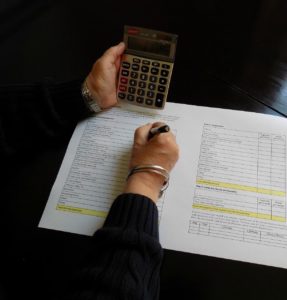
Improving your finances may have been a New Year’s resolution for you, but we all know how busy we are during the beginning of the year. Then, one thing leads to another, and boom, it’s summer.
Use this time to create a summer savings plan that will get you ahead in the fall. Here is what we recommend:
Before you start:
- Clearly state your goals. Before starting a savings plan, you should know have a clear vision of your financial goals. Are you tired of living paycheck to paycheck and want to change your lifestyle? Or, are you hoping to by a new home next year? Whatever it is, write it down.
- Determine your net revenue and expenses. A summer savings plan will only be helpful if you know where to begin. Know how much you bring in each month versus how much you spend. This includes both fixed and variable expenses. Once determined, you will be able to evaluate where you can make cuts and how much you can realistically save each month. We recommend saving 25% of your income, distributing some of that savings between an emergency plan and retirement, but this may not be realistic to you to start. If that is the case, start at 10% and work your way up to the 25% mark.
- What is the cost of your financial goal? If you have something specific you want, such as a new car or that dream vacation, acknowledge the full cost of this goal. If you are just wanting to improve your financial situation in general, think about how much each month or annually you would ideally love to have left over after expenses. You need to know the cost of your goal in order to work toward it.
- For instance, if you are looking to renovate your home, and you’ve figured it will cost $8,000 to accomplish all your renovations, you need to save roughly $667 per month for this project alone for a year in order to do it 12 months from today.
Get your FREE trial of Simplifi by Quicken. You work hard for your money. Now let’s make it work hard for you.
Making the plan:
- Pick your platform. There are many tools you can use to save and invest money. Once you know how much you are able to save each month, you need to pick the platform that is best for you and your summer savings plan. If you want to get a bigger bang for your buck, you will want to consider a long-term resource that develops interest over time. The average interest rates for online banks are 0.75% to 0.95%. Anything higher is definitely an option to consider as well, but just be sure to do your research on these offers and companies.
- Another option for your summer savings plan is to actually invest some of your savings. A couple alternatives to savings accounts include a mutual fund, which is a professionally managed investment program funded by multiple shareholders that makes up a collection of stocks and bonds; and a Guaranteed Investment Certificate (GIC), which is a secure investment that guarantees 100% of the money originally put in but delivers a lower return due to its low-risk characteristic.
- We recommend consulting in a financial adviser if you are new to investing.
- Go automatic. To ensure that you are putting money toward your summer savings plan consistently, set up your savings to go in to your account(s) automatically.
- Make sacrifices. Instead of splurging on a summer vacation this year, hold off and use that money toward these financial goals. You can still enjoy your summer without spending a lot of money on trips. In fact, you can still enjoy a getaway or two. Camping by a lake is a great inexpensive option. Hate camping? Take advantage of the recent sharing economy trends through companies like Airbnb and EatWith. You can easily plan a weekend getaway somewhere closer to you with reduced costs in accommodations and food. If a big trip is part of your financial goals, try to save even more to make your money go even farther.
- If saving up for a trip is in fact on your radar, look into using a Tax-Free Savings Account so that your savings grow even faster.
- Note your progress. As you have the amounts for each goal determined along with deadlines, you need to start monitoring your progress on reaching these goals to help keep you on track. Create a savings plan checklist and mark off each item one by one. Leave notes and write down the dates of completion. Use a template that works best for you and is easy for you to understand. Even if one of the items is “start a retirement fund,” you are working your way to a better financial future, even one year from now.
- If you decide to give your savings an extra little kick by taking on some temporary seasonal jobs this summer, be sure to include that extra money in your plan.
- Make any adjustments as needed. With your plan in place, use your free-time this summer wisely to make your plan a reality. Adjust your plan as needed, including extending goal dates for leisure items on your list or putting more toward an emergency fund. Frequently compare and contrast your target savings to what you are actually saving and see where you can make changes to meet your target more.
Using these tips will help you get ahead for the following seasons as well as help you develop some positive saving habits.
Would you add anything to the list? What does your summer savings plan look like?
Comments